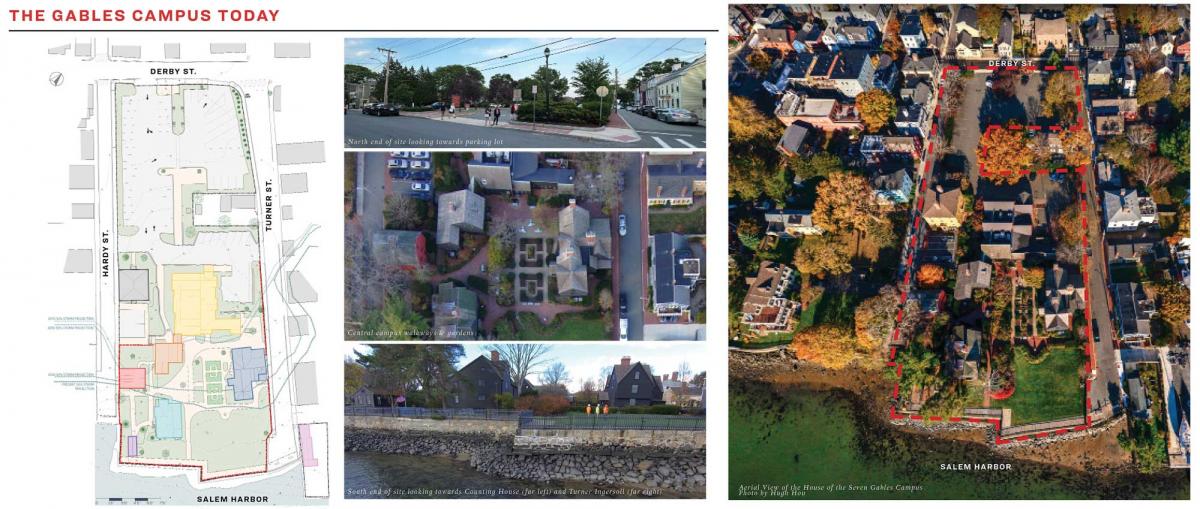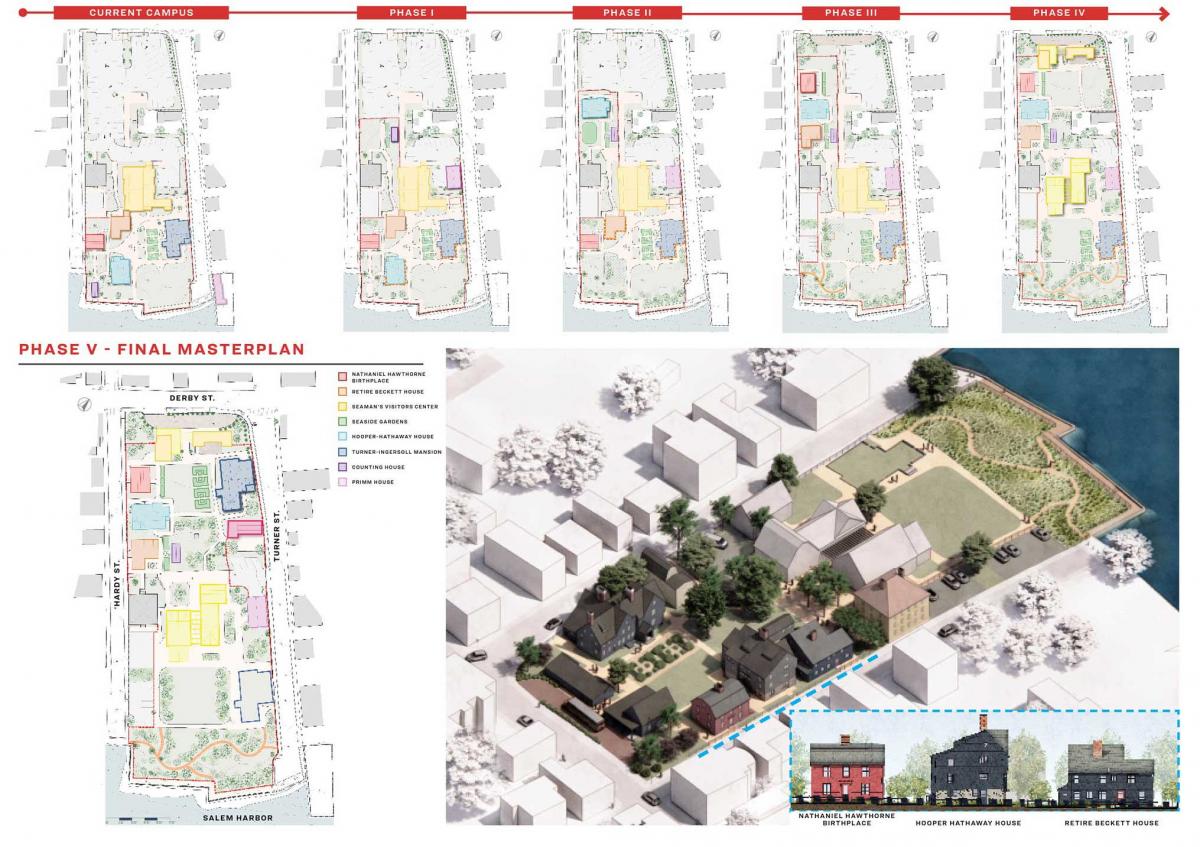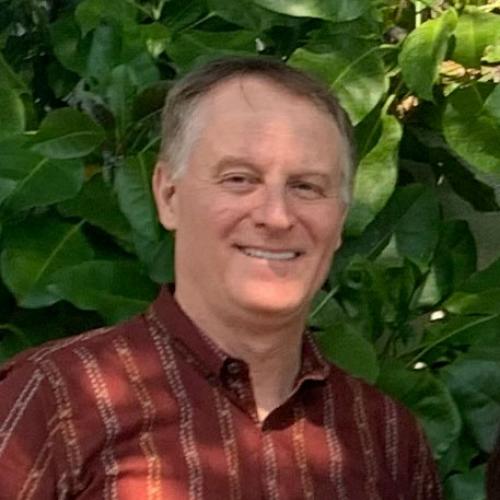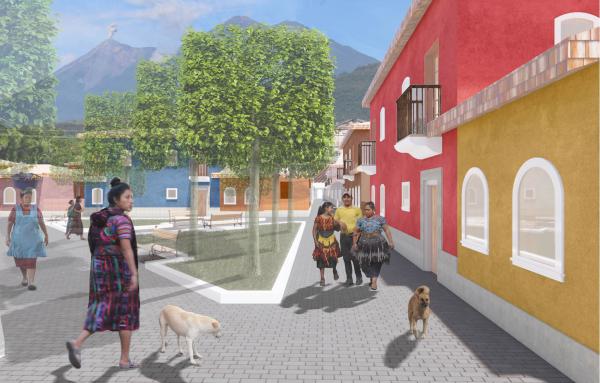
Block-scale urbanism adapts historic campus to climate change
The Preserving History project in Salem, Massachusetts, uses block-scale urbanism to adapt one of America’s historic building campuses to climate change. The House of the Seven Gables (also known as the Turner-Ingersoll Mansion) was made famous by Nathaniel Hawthorne’s gothic novel of the same name, and sits on a waterfront site that is already at high risk of flooding.
The 2.5-acre block on Salem Harbor also includes the Hawthorne Birthplace, the Hooper-Hathaway House, and other historic structures, but is marred by street-facing parking lots where houses once stood. Union Studio worked with the House of the Seven Gables Association, which runs a museum on the site, to create an innovative, 50-year phased plan that is a model for other historic sites threatened by sea-level rise.
The plan uses “triggers” related to annual flooding probability and other factors, rather than fixed dates, to determine the start of each new phase. The adaptation plan is itself adaptable to unexpected shifts in climate change. The immediate steps mostly involve basement adaptation, protection of utilities, stormwater management, and other temporary measures. Building relocations throughout the five phases will enhance walkability and the public realm in the historic Point Neighborhood of Salem. In the end, all buildings will be grouped around a courtyard with a new visitor’s center, and the flood-prone harbor-facing part of the block will consist of green, open space.

The project team arrived at this innovative plan, which is already influencing other historic sites, by including many specialties and interests early in the process, including preservationists, urban planners, engineers, climate scientists, and community members.
Paul Wright, director of the House of the Seven Gables, explains that “This climate adaptation report will serve as the roadmap for The Gables for the next five decades through a period of unprecedented change. Our hope is that The Gables and its legacy will outlast this change, but we will likely have to fundamentally alter our campus in response to it.”
The long-term strategy will improve the public realm along Derby Street, one block north of the harbor, by restoring buildings on the street (a visitor’s center with a discreet bus pull-in), rather than the current parking lots. Courtyard planning will make a nice semi-private green space with rain gardens at the center of the campus.

The first phase is expected to last throughout this decade and primarily involves important but less visible steps, such as protecting utilities within the buildings. A small building, the Counting House, located closest to the water, is slated to be moved in this phase.
Sometime in the 2030s, the Hooper Hathaway House is expected to be moved, depending on triggers—the first significant building relocation. This move would place the house next to Hardy Street on the west side of the block, with the walk-out basement, now used as a workshop, facing the street. This move will restore the original urban frontage of the house, which is a logical place to establish a permanent maritime exhibit and educational offerings.
Moving the Nathaniel Hawthorne Birthplace is slated for phase three, around 2050, depending on triggers, and that would restore Hardy Street to its original appearance before the parking lot was built. Relocating the House of the Seven Gables itself, a difficult proposition, could happen in the 2060s.
“The Gables is a role model to other preservationists and the local community as it shares their increased knowledge of the climate risks and develops relocation plans for buildings and assets,” comments Barbara Warren of the Salem Sound Coastwatch.

The 2025 Charter Awards will be presented at CNU33 in Providence, Rhode Island, on June 12.
Preserving History: Assessments and Climate Adaptations at The House of the Seven Gables, Salem, Massachusetts:
- Union Studio Architecture & Community Design, Principal firm
- The House of the Seven Gables Association, Client: Museum, national historic landmark and active settlement house
- Salem Sound Coastwatch, Non-profit coastal watershed organization
- Horsley Witten Group, Site engineer
- Massachusetts Office of Coastal Zone Management, Policy, planning, and technical assistance agency on coastal and ocean issues within the Executive Office of Energy and Environmental Affairs
- Collins Engineers, Civil engineer
2025 CNU Charter Awards Jury
- Rico Quirindongo (chair), Director, City of Seattle Office of Planning and Community Development
- Majora Carter, CEO of Majora Carter Group in the Bronx, New York City
- Jake Day, Maryland Secretary of Housing and Community Development
- Anne Fairfax, Principal, Fairfax & Sammons in New York, NY, and Palm Beach, FL
- Eric Kronberg, Principal, Kronberg Urbanists + Architects in Atlanta, GA
- Steven Lewis, Principal, ZGF Architects in Greater Los Angeles, CA
- Donna Moodie, Chief Impact Officer, Urban League of Metropolitan Seattle
- Joe Nickol, Principal, Yard & Company in Cincinnati, OH







